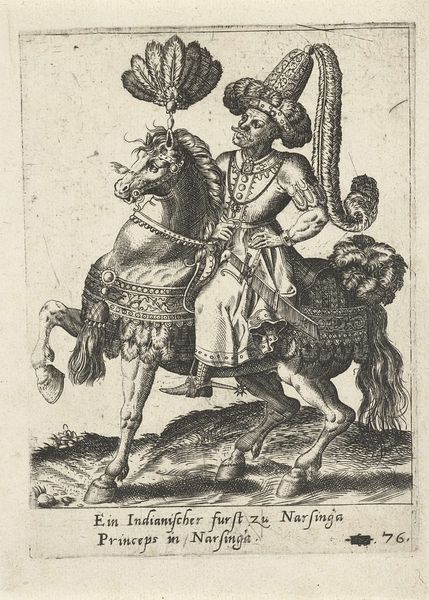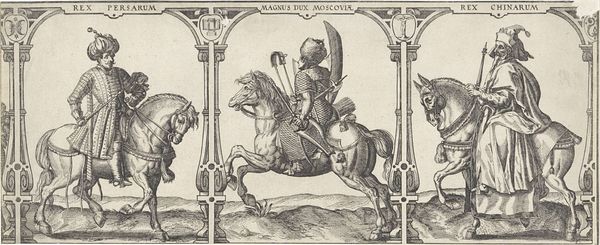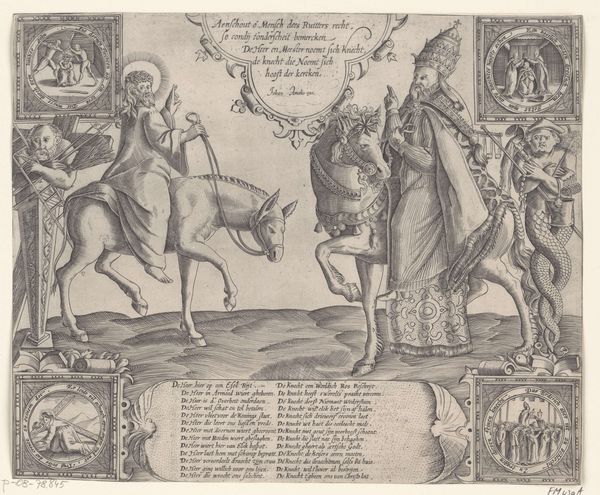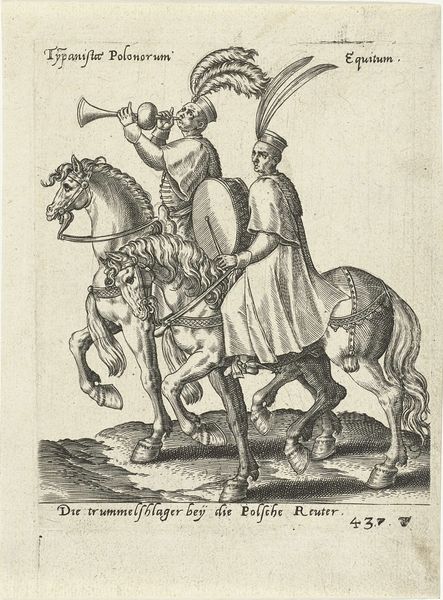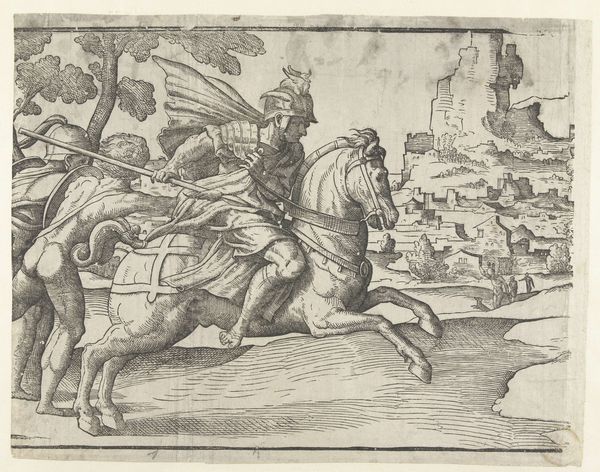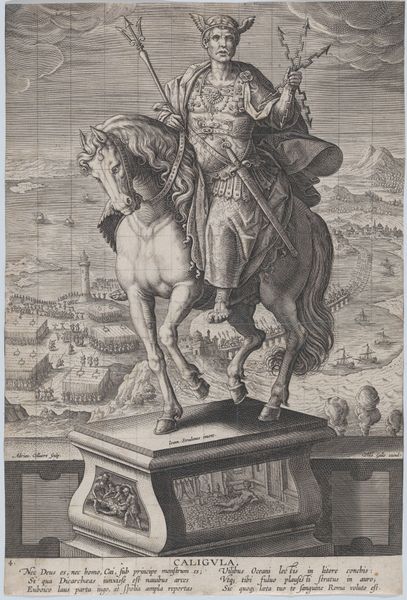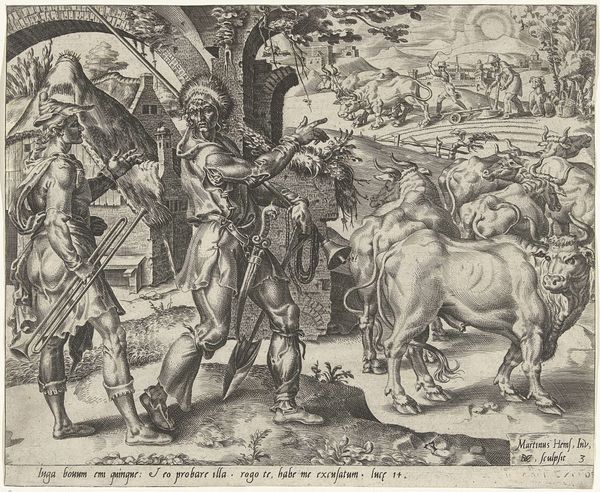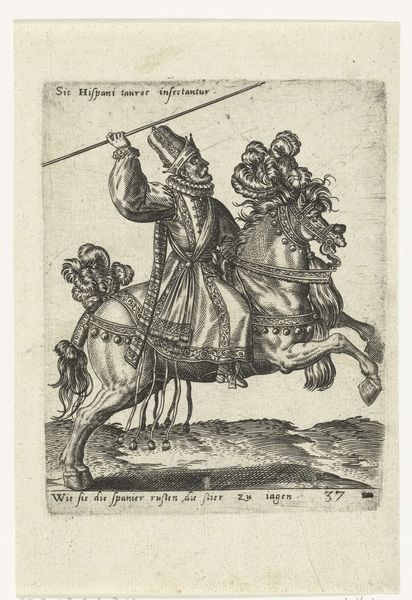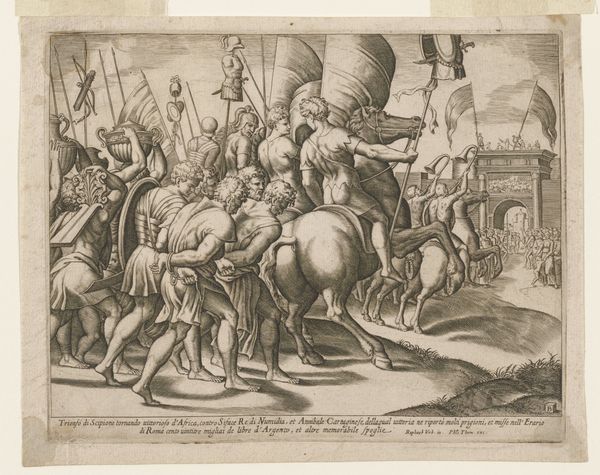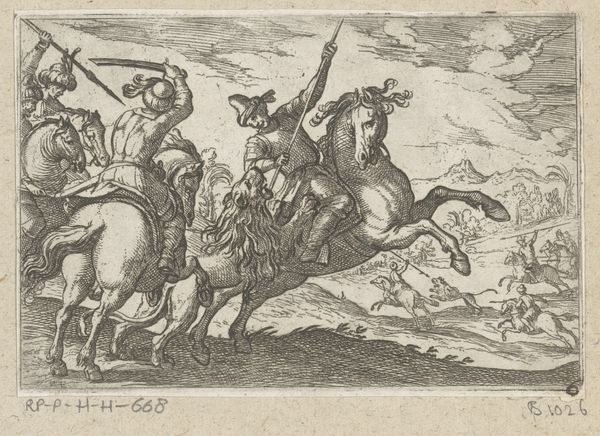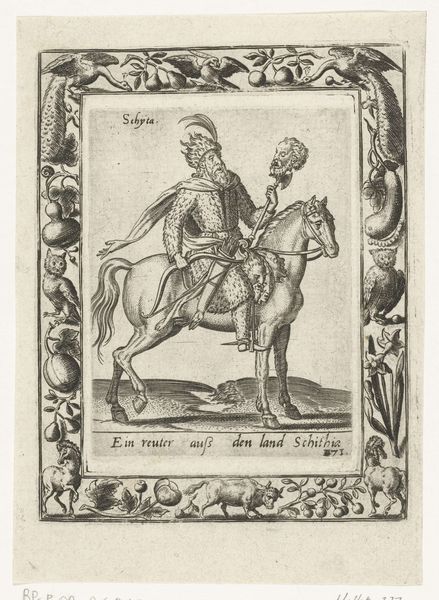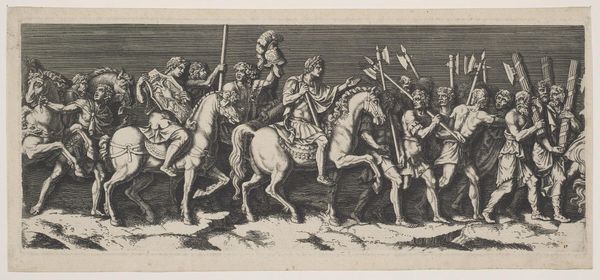
Ruiterportret van een keizer van Turkije en een ruiterportret van een koning van China 1601 - 1650
0:00
0:00
print, engraving
#
portrait
#
baroque
# print
#
figuration
#
orientalism
#
line
#
history-painting
#
engraving
Dimensions: height 272 mm, width 387 mm
Copyright: Rijks Museum: Open Domain
Philips Serwouters made this double portrait of an emperor of Turkey and a king of China using engraving, sometime around the mid-17th century. Engraving is an intaglio process, meaning that the image is incised into a surface – in this case, a copper plate. The artist would have used a tool called a burin to cut lines into the metal, creating grooves that hold ink. The plate is then inked, wiped clean, and pressed onto paper with great force, transferring the ink from the grooves to create the final print. The stark contrast between the black lines and the white paper gives the image a graphic quality. But it’s the sheer labor involved that is most impressive. The artist meticulously carved each line, building up the image through painstaking work. While the subject matter speaks to the global reach of Dutch trade in this period, the print itself is a testament to the skill and effort involved in early modern printmaking. It reminds us that even seemingly simple images are the product of complex technical processes and human ingenuity.
Comments
No comments
Be the first to comment and join the conversation on the ultimate creative platform.

